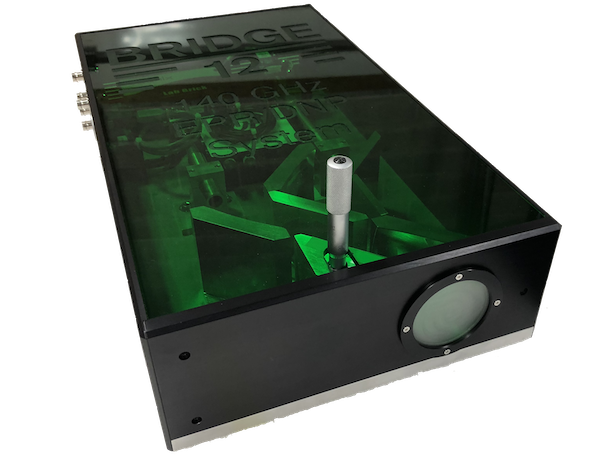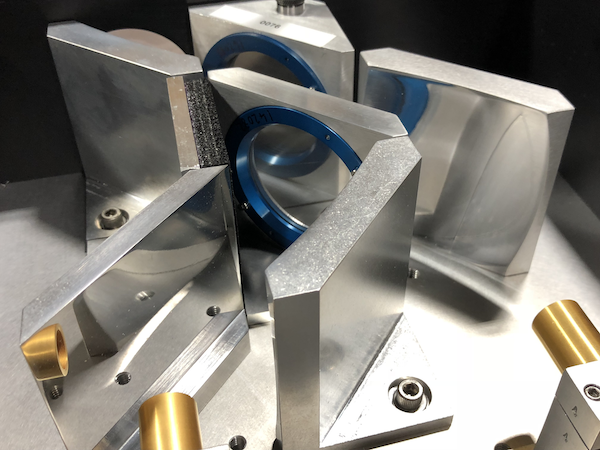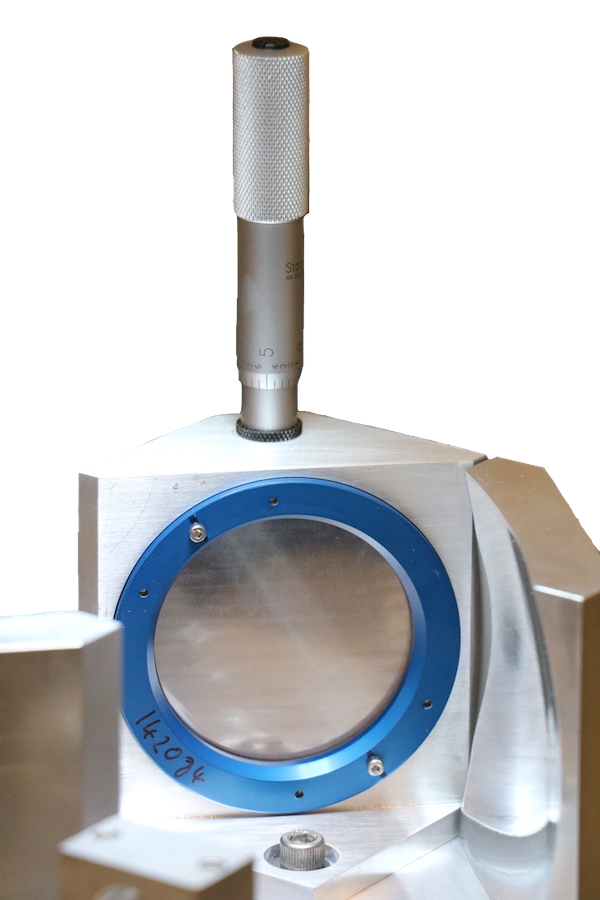
Compact HF EPR systems
The Bridge12 EPR Spectrometer is a compact system and highly flexible research instrument for high-field (HF) EPR spectroscopy. The system can operate as a stand-alone continuous-wave (cw) or time domain spectrometer. The system is based on a frequency-agile solid-state microwave and can be configured to operate in homodyne or superheterodyne detection mode.

Low-loss quasi-optics
For operating frequencies > 130 GHz a compact, quasi-optical (QO) circulator (duplexer) is at the heart of the system. It allows efficient separation of the incident microwave beam from the reflected beam. Instead of the size of a dining table, the Bridge12 QO circulator is of the size of a shoe box for easy operation and aligning. The quasi-optics can be modular, allowing add ons of additional isolators or a second microwave source.

Faraday Rotator or Polarization Transforming Mirror
In many QO EPR systems a Faraday Rotator (FR) is crucial to the operation of the circulator. In combination with wire grids, the FR allows separation of the reflected beam from the incident beam. While the FR is the method of choice when using single-mode EPR cavities, it suffers from high insertion losses of typically 2-3 dB. Alternatively, when using non-resonant sample holders, a Polarizing Transforming Mirror (PTR) can be used. Not only has the PTR much lower losses (< 0.5 dB) it also allows irradiating the sample with circular polarized microwave radiation, which leads to higher B1 fields at the sample. In addition, the PTR can be tuned over a larger frequency range, making it the preferred choice for multi-frequency EPR spectrometers. More information about the PTR can be found here.
Cryogen-free is the way to go
The Bridge12 high-field EPR spectrometers use a cryogen-free, compact magnet. The magnet is actively shielded, and won’t require a large footprint. That way the high-field EPR system will even fit into an already crowded lab. The sample temperature can be varied from 2.4 K to room temperature (or higher) using a cryogen-free cryostat. That way, the experiment time is not limited by the amount of liquid helium.
A modular system
Don’t know yet where your research will lead you in the future? No problem. Bridge12 high-field EPR spectrometers are designed with flexibility in mind. The basic system can operate in reflection mode and can record cw EPR spectra using a lock-in detection scheme. Many more different configurations are possible:
- Multi-frequency operation
- Superheterodyne detection for increased sensitivity
- Time domain add-on for pulsed EPR experiments
- AWG add-on to generate shaped pulses for increased excitation Most of these options can be added later on.
You don’t see the option that fits you? Contact us to discuss your requirements.
Technical Specifications
- Operation Frequency: 95 to 400 GHz. The system can be configured for multi-frequency operation (e.g. 140 and 350 GHz)
- The available output power strongly depends on the operating frequency. At 95 Ghz currently up to 10 W (pulsed and cw) are available. At 263 GHz > 150 mW is available. Please contact Bridge12 for details.
- Excitation: Continuos-wave (cw), fixed phase pulse excitation or Arbitrary Waveform Generation (AWG) pulses.
- Quasi-optical duplexer for induction mode and reflection mode detection.
- Arbitrary excitation phase of microwave beam (linear, circular or all combinations in between)
- Full computer controlled operation using SpecMan4EPR.
- Cryogen-free, superconducting magnet up to 14.1 T
- Cryogen-free variable temperature insert for operation between 2.4 K and room temperature